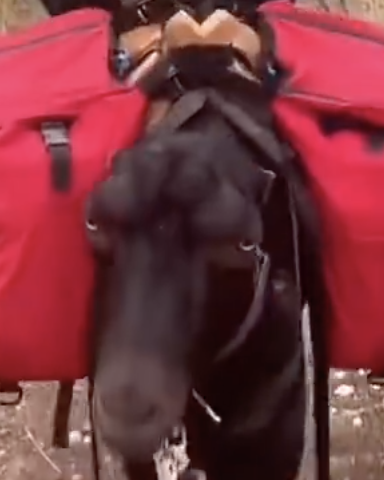The infrastructure has gone. They’re sending in the goats and mule trains.
In the aftermath of Hurricane Helene, innovative methods have emerged to aid survivors, including the utilization of mules and goats. These animals have been instrumental in delivering supplies to areas where traditional vehicles couldn’t reach due to flooding or debris.
Goats, surprisingly, have been used for their ability to navigate through debris, helping clear paths and, in some instances, providing milk for communities cut off from regular food supplies. This approach not only showcases community resilience but also highlights the unique roles animals can play in disaster relief, offering both practical help and emotional support to affected communities. While not as robust as mules or horses, goats can carry lighter loads, which might include small medical supplies, food, or communication equipment. This might not be the primary method for moving large quantities of supplies, but they serve well in reaching isolated pockets of survivors or in supplementing other transport methods.
Mules have been utilized for their exceptional ability to navigate rough, muddy, or debris-filled environments where vehicles might become stuck or where roads are completely washed out. Their strength and sure-footedness make them ideal for transporting heavy, life-saving supplies such as medicine, water, and food to isolated communities. Mules can carry significant loads over terrain that would be impassable to other forms of transport, providing a lifeline to survivors cut off by the disaster.
Yes, goats are everywhere. People who understand the mountainous terrain are bringing their goats, horses, and pack mules in. ❤️
— FoxyFarmer🦊🇺🇸🇺🇸🇺🇸🇮🇱 (@GardensR4Health) October 4, 2024
Understand, the entire region of western NC is like a war zone stuck in the 1800’s. Thousands are still stranded because roads are destroyed. pic.twitter.com/FHciHULCZ7
The Gateway Pundit reports these efforts originate from Mountain Mule Packer Ranch, based in North Carolina, a company that provides pack mules to the US military.
— Julia 🇺🇸 (@Jules31415) October 3, 2024
It's been delivering supplies to Black Mountain and Swannanoa, North Carolina in the aftermath of the hurricane. pic.twitter.com/aA60dPCtmz
